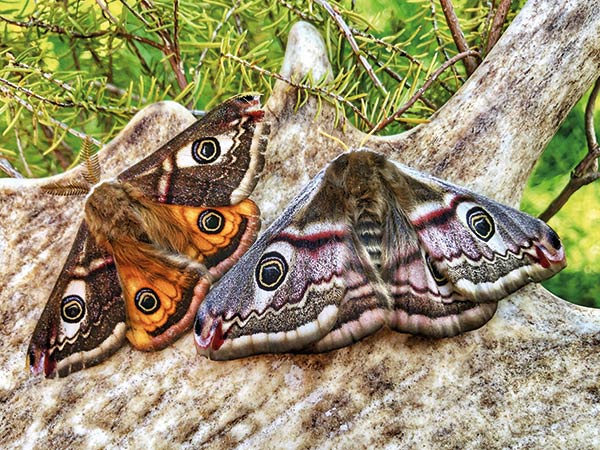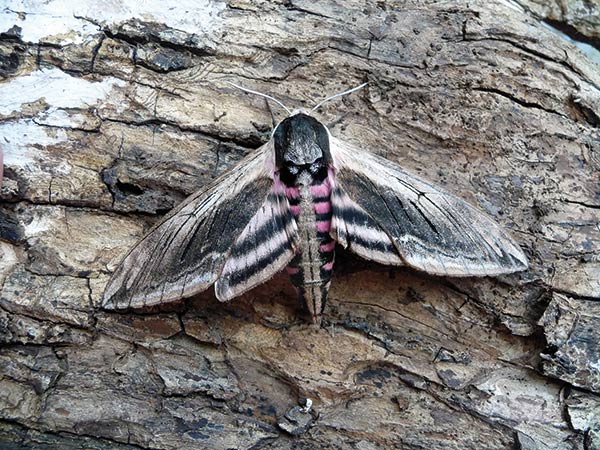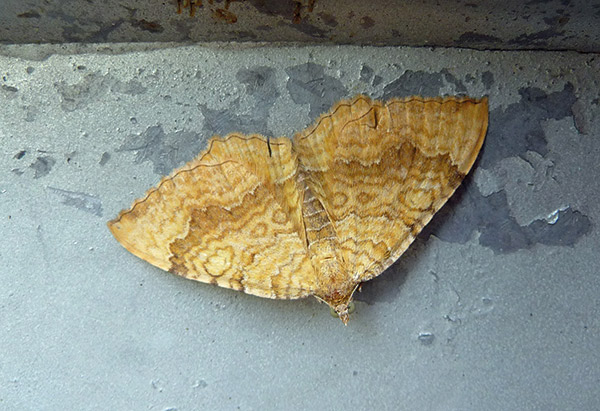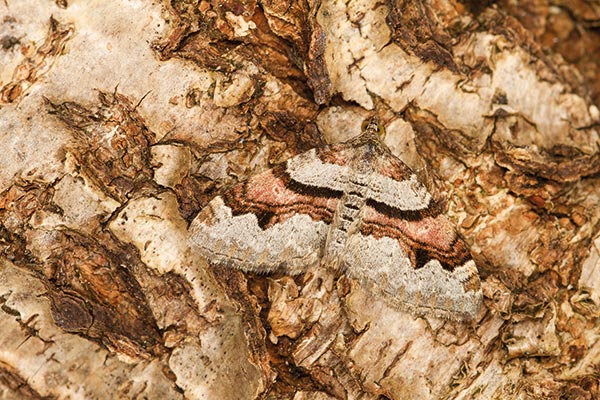Subtotal: $
Checkout-

The Leper of Abercuawg
-

Dandelions: An Apology
-

A Wilderness God
-

Why I Hunt
-

Reading the Book of Nature
-

Breakwater
-

Lambing Season
-

Earthworks Urban Farm
-

Are You a Tree?
-

Practicing Christianity
-

Who Gets to Tell the Story?
-

A Medievalist Looks for the Image of Christ
-

In Defense of Chastity
-

Poem: “Let Them Grow”
-

Poem: “Squall”
-

Readers Respond
-

GEDs for Myanmar Migrants
-

Inside Nyansa Classical Community
-

Watching the Geminids
-

A World Full of Signs
-

Covering the Cover: The Riddle of Nature
-

Back from Walden Pond
-

Can Masculinity Be Good?
-

Nature Is Obsessed with Me
-

Ancient Songs in the Desert
-

The Sadness of the Creatures
-

Meeting the Wolf
-

Saskatchewan, Promised Land
-

The Plants Can Talk
-

Saving the Soil, Saving the Farm

The Wonder of Moths
Gorgeous and fragile, moths showcase nature’s richness and vulnerability.
By Caroline Moore
February 27, 2024
I have been wondering at moths since I was a small child. When I inherited my grandfather’s old moth trap, twenty-six years ago, I started logging the moths in my Sussex garden, where I have so far found 903 species. Of these, seventy-five are rare enough to be categorized as Nationally Scarce, and twelve are either on the Red List of threatened and endangered species or proposed for it.
Despite its age, my ancient Robinson trap is still perhaps the best model on the market. Moths are attracted to the light of the mercury-vapor bulb, and are funneled down a cone into a metal drum beneath. Cardboard egg cartons in the drum provide sheltering, shadowed caves where the moths rest quietly until morning. I come down early, and very gently lift the lid to inspect the glistening riches within. After a good mothing night, warm and humid, there will be over a hundred different species clinging to the boxes, to be lifted out, identified, counted, and, if they’re rare, photographed for the county moth recorder. The moths are then usually released unharmed, though I have to help them to dodge the greedily opportunistic blue tits and robins.
My hobby – perhaps obsession would be a better word – makes every morning thrilling. The excitement is as intense as the Christmases I remember from childhood: I never know what the trap will hold. And looking at moths keeps alive that childhood sense of pure wonder.

Emperor moth pair on a fallow deer antler. Photograph by Andy Newman. Used by permission.
If the beauty of moths makes their study aesthetically rewarding, their sheer diversity makes it ecologically significant as well. There are about 2,500 species of moth in the British Isles. (Only two are likely to be the larvae found munching on your woollies – always the best cashmere, for choice, since it is more digestible.) For comparison, there are only fifty-seven species of butterfly – fifty-nine if one includes those regular migrants the painted lady and clouded yellow. Butterflies and moths, of course, are both members of the same order of insects, Lepidoptera. Butterflies, however, are a minor branch; the vast majority of the world’s Lepidoptera are moths.
Lepidoptera means “scaly-winged”; every moth wing is patterned with a mosaic of microscopic scales, as fine and fragile as dust. Every minuscule scale is pigmented, and its structure both reflects and diffracts the light, creating an iridescent shimmer of extra colors like oil on water – glittering blues, golds, and silvers. The scales are easily rubbed off, but the wings of even the plainest newly hatched moth have the sheen of silk. The very name of the merveille du jour suggests its evanescent beauty, patterned with ripples of peppermint green, silver, and black. Even the less gaudy moths have a superbly subtle beauty. A yellow shell, for example, has numerous delicately scalloped lines of brown, as if drawn with a wavering fine-toothed comb, across its corn-gold wings.
The more closely you look at any natural beauty, the more you see: there is an intricate excellence to be discovered. This is especially true of the so-called micromoths – the (usually) smaller and (usually) more taxonomically primitive species which make up the bulk of the moth population. There are around nine hundred species of British macromoths: these are the families of larger moths that are found in a standard field guide. The largest of these are the hawk moths, such as the privet hawk moth, which has silvery-grey wings about five inches across and an abdomen and underwings striped black and bubble-gum pink. Another pink-tinged moth, the rosy marbled, is among the smallest of the macromoths, with a forewing measuring about three-eighths of an inch. Some micromoths are larger than this.

Privet hawk moth. Photograph by the author. Used by permission.
Moth enthusiasts generally start with the eye-catching macromoths, and are then lured into the micros. It is among the micros that the most amazing diversity of form and habits are found, since their smaller size allows them to exploit a wider range of habitat niches. I have to admit that one or two families of micromoths are the equivalent of a birdwatcher’s “little brown jobs”: I can only identify a few of the most striking among the 109 species of Coleophoridae – pale-brown, tiny moths with long thin wings and forward-pointing antennae. Species that cannot be identified by external characteristics, however, can be separated out by “gen. det.” – a rather sinister abbreviation that stands for “determination by genitalia examination.” The genitalia of males and females of each species of moth have evolved to fit uniquely like keys in locks; this handily prevents interspecies hybridization.
The invaluable Field Guide to the Micro-moths of Great Britain and Ireland by Sterling and Parsons illustrates and describes a mere 1,033 of the easier species. Taking a good quality close-up photograph helps identification – one can enlarge the diagnostic features such as wing-pattern, labial palps, or spurs on the legs. And good photographs also reveal the extraordinary beauty of many of these miniature creatures. One of my favorites is the tiny and rare Bisigna procerella, a regular visitor to my trap: it is coppery-orange, patterned with a loop of black and silver, and its forewing is only about a quarter-inch in width and length. Many micromoths seem at first glance small and brown, but viewed close-up they sparkle as if stitched with metallic thread, or have the rich patterns of minute Persian carpets.
The huge diversity of size, shape, and wing patterns makes moths a useful source of ecological data. As with birds, there is a range of species that are readily identifiable by list-obsessed amateurs. If we submit our data to the county recorders who are compiling data on all Britain’s Lepidoptera, we can be dignified by the appellation of “citizen scientists” rather than just being “twitchers” or “nerds.” But moths are even more valuable than birds to ecologists, because there are so many more species, and because they are widely recognized as important markers of biodiversity.

Yellow shell moth. Photograph by the author. Used by permission.
This is partly because of their place in the food chain. Moth larvae eat a wide range of plants: some are generalists, and their Very Hungry Caterpillars will eat many sorts of leaf; some are specialists, which does not always work to their advantage (the rare white spot, for example, will only eat a form of campion called Nottingham catchfly). Some micromoth larvae feed on fungi, algae, mosses, or lichen; others feed on decaying plant or animal materials. A cousin of the clothes moth feeds on moldy corks in wine cellars; another is found in fox excrement (this moth is horribly common in my garden). There is even one moth, the wax moth, whose larvae can consume and digest plastic bags, though its preferred food is the wax in honeycombs.
A wide range of moths indicates a wide range of plants, which they help to pollinate, and a good diversity of habitats. Moths and their larvae are consumed as well as being consumers. They are important food for birds, bats, hedgehogs, frogs, toads, lizards, and insects such as spiders, wasps, hornets, and beetles. At the height of their breeding season, great tits and blue tits in the United Kingdom feed an estimated two billion caterpillars to their nestlings every day. And those harassed parents have to eat too.
The fragility of moths makes them particularly valuable to ecologists as indicators of the health of our ecosystems. They are like canaries in a mine, the first to suffer. Moths are particularly susceptible to pollution of all kinds: water pollution, air pollution, chemical pollution, and light pollution.
The last is the least written about, but the one about which private individuals can make the most difference. Light pollution creates havoc in the natural rhythms of wildlife, disrupting patterns of migration, feeding, and reproduction. The problem of streetlights, outdoor security lights, and floodlights has paradoxically been made worse by half-hearted attempts to be “green.” LED lights are now favored, on the grounds that they use less energy. LED lights, however, generally emit a bluer spectrum, which is more attractive to moths. What would be truly energy-efficient, of course, would be to turn outside lights off, or at the very least to make them motion-activated.

Flame carpet moth. Photograph by Anthony Roberts. Used by permission.
Water pollution affects the moths that live beside our rivers and streams. There are specialist species whose larvae live below the surface of the water in ponds, marshes, and slow-moving rivers. The larvae of the China-mark family, for example, feed on water plants and build underwater cases out of fragments of leaf.
Air pollution is devastating for moth diversity. Many moths feed upon lichens, which are among the first organisms to suffer from pollution. A lichen is made up of a fungus cohabiting in a symbiotic relationship with green algae, or cyanobacteria, or both, which can photosynthesize the sugars that their fungus host cannot. But these composite organisms have no roots or protective skin, and they absorb moisture and air directly through their surfaces, making them highly sensitive to air pollution. Sulphur dioxide is among the worst pollutants, produced by coal-burning; nitrogen dioxide is produced by cars but also by agricultural fertilizers and livestock waste. Both dissolve in water to produce acid rain.
There are so many tales of ecological doom and gloom that I’d like to introduce a ray of hope. We don’t hear so much about acid rain nowadays, for the simple reason that our air is cleaner than it was. And the impact of Britain’s Clean Air Act can be traced directly in its remarkable effect on moth populations.
Most of the lichen-eating moths are micros, logged only by nerds like me, but the fortunes of the conspicuous lichen-eating footman family are readily tracked by amateur recorders, with hugely cheering results.
The family got its name from the common footman, which looks as if it is wearing a grey uniform with a yellow stripe down each side. A study published in 2019 found that its population has risen by 40 percent in the last thirty-five years. That is nothing, though, compared to the buff footman, which increased by 815 percent in the same period – it had been almost extinct in Sussex. The scarce footman, which looks like a more tightly rolled-up version of the common footman, had the most startling rise of all. The population rose by 2,035 percent – so it is not so scarce now!
There are so many tales of ecological doom and gloom that I’d like to introduce a ray of hope. We don’t hear so much about acid rain nowadays, for the simple reason that our air is cleaner than it was.
Chemical pollution is still the chief killer of moths – but there has been increasing awareness of the dangers for human health in the indiscriminate use of pesticides, herbicides, and fungicides, and there are growing efforts to farm with rather than against nature, though there is a long way to go.
Urbanization is still on the rise, however; habitats are being irrevocably destroyed, and many insect populations are in swift decline. The species-rich habitats that do remain are increasingly patchy, and their populations are correspondingly vulnerable because they live on small and isolated islands in a sea of ecological desolation.
I am sometimes asked what I am “doing right” to have found so many moths in my own garden (apart from looking for them). The truth is that it is not really me – it’s the landscape around my garden that is so fruitful. The light from my trap shines out across the Dudwell Valley, which is a classic mosaic landscape – a patchwork of small fields, mercifully unsuited to intensive farming, with old hedgerows, patches of ancient woodland, boggy water meadows, and dewponds. This is a landscape rich in heterogeneity, a mix of interacting habitats. The importance of these mosaic landscapes is often overlooked in our struggle to save more specific types of endangered habitat – reed beds, woodlands, or moorlands.
A crucial factor for biodiversity is not just the variety of these patches, but their interconnectivity: even small populations have greater resilience when movement between them is possible. I am lucky here, because the River Dudwell forms a superb wildlife corridor. Rare moths that breed only on shingle beaches regularly find their way to Etchingham from Rye, coming up the River Rother and turning left into the Dudwell. These have included such Nationally Scarce species as Neofriseria peliella, Pediasia contaminella, Platytes alpinella, Ancylosis oblitella, Scrobipalpa ocellatella, and Oncocera semirubella. I also gather a fine array of migrants: new breeding species are colonizing all the time. Lepidopterists must be the only internet group to celebrate both migrants and colonization!
Living, as I do, in an old rectory, I sometimes think of the clergymen who I imagine named some of the moths that come to my trap – the Hebrew character, the many varieties of Quaker, conformist, and nonconformist moths, gothic arches, seraphim … The Bible does not have a good word to say for moths; but surely these men of God found the wonder of creation in their pursuit of lepidoptery, just as I have.
Already a subscriber? Sign in
Try 3 months of unlimited access. Start your FREE TRIAL today. Cancel anytime.









































Denise Williamson
Your article is beautiful and timely, as we are starting a moth watching group this spring in North Idaho. Thank you for pointing us to this wonder! As a girl, I had an old Dover Publications copy of The Moth Book. For a few years, I wrote the "first" date of seeing my local favorite (with orange underwings) from our family's hardwood forest in PA. Years later I returned to our property for just one more year. I saw my childhood friend-moth on a night in early summer. I found my yellowed moth book, with my penciled notes. My friend-moth showed up, clinging to the brick wall near the porch light, nearly at the same date as in years before. I wonder now--10 years later--are they still there? Has their timing changed? I don't live in my precious childhood forest. I wonder if my moth friends do.